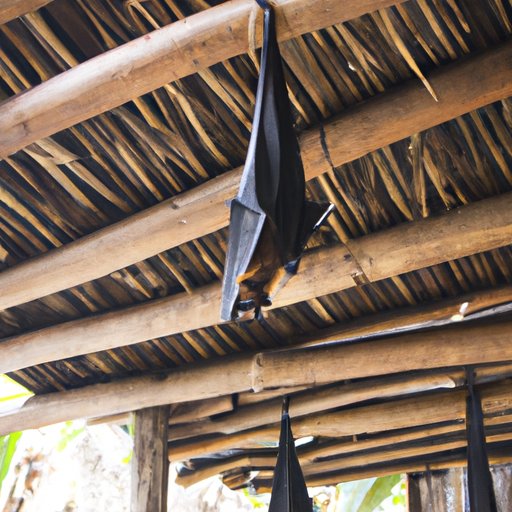Introduction
Bats are an incredibly diverse group of mammals. They can be found in almost every corner of the world, from the tropics to the Arctic Circle. Bats have an important role in ecosystems, providing essential services such as pollination and pest control. As a result, understanding their behavior and ecology is critical for the conservation of many species.
In this article, we will explore the world’s biggest bats. We will look at their physical characteristics, habitats, diets, and other behaviors. We will also provide a comprehensive guide to the top 10 largest bat species on Earth.

A Comprehensive Guide to the Largest Bats in the World
Bats come in all shapes and sizes, ranging in size from less than an inch to over two feet long. The largest bats belong to the megabat family, Pteropodidae. These bats are found in tropical regions of Africa, Asia, and Australia.
Megabats have several unique characteristics that set them apart from other bats. They typically have large eyes and ears, which help them locate food more easily. They also have long wings and short fur, which helps them stay cool in hot climates. Megabats typically have long lifespans, with some species living up to 20 years.
Megabats are found in a variety of habitats, including rainforests, woodlands, and even urban areas. They feed mostly on fruits, nectar, and pollen, but some species will also eat small animals such as insects and frogs.
The Giant Bat Species: Uncovering the Secret Lives of the Biggest Bats
The largest bats in the world are the flying foxes. These bats are found in tropical regions of Asia, Africa, and Australia. Flying foxes can reach lengths of up to 3 feet and weigh up to 3 pounds.
Flying foxes are mostly fruit-eaters, but they will also occasionally eat small animals such as insects and frogs. They form large colonies and are typically active during the night. They use their loud calls to communicate with each other.
Flying foxes are generally not endangered, but some populations are threatened by habitat destruction and hunting. Conservation efforts are underway to protect these fascinating animals.

Top 10 Biggest Bats in the World
Here is a list of the top 10 biggest bats in the world, based on average adult weight:
- Indian Flying Fox (Pteropus medius) – 2.2 lbs
- Black Flying Fox (Pteropus alecto) – 2.2 lbs
- Malayan Flying Fox (Pteropus vampyrus) – 2.2 lbs
- Spectacled Flying Fox (Pteropus conspicillatus) – 1.8 lbs
- Mariana Fruit Bat (Pteropus mariannus) – 1.6 lbs
- Island Flying Fox (Pteropus hypomelanus) – 1.5 lbs
- Rodrigues Fruit Bat (Pteropus rodricensis) – 1.4 lbs
- Gray-headed Flying Fox (Pteropus poliocephalus) – 1.3 lbs
- Large Flying Fox (Pteropus vampyrus) – 1.1 lbs
- Little Red Flying Fox (Pteropus scapulatus) – 0.9 lbs
These bats are found in tropical and subtropical regions of Asia, Africa, and Australia. All of these species are listed as Least Concern on the IUCN Red List of Threatened Species.
An Exploration of the Largest Bats on Earth
The largest bats in the world have some incredible adaptations that allow them to survive in their habitats. For example, the Indian flying fox has a wingspan of up to 6 feet, allowing it to cover vast distances in search of food.
The large size of these bats also allows them to migrate long distances in search of food sources. Some species, such as the Rodrigues fruit bat, are known to migrate hundreds of miles during their seasonal migrations.
Many of the largest bat species also hibernate during the winter months in order to conserve energy. This behavior helps them survive through the colder months when food is scarce.

Spotlight on the Largest Bat Species: A Look at the Biggest Bats Around the Globe
The largest bat species have some unique physical and behavioral characteristics that make them stand out from other bat species. For example, the Indian flying fox has a distinctive reddish-brown fur and large eyes, while the gray-headed flying fox has gray fur and a black face mask.
Behaviorally, the largest bat species are highly social and often form large colonies. They communicate with each other using loud calls, and they have complex social hierarchies. Many of the largest bat species also engage in cooperative breeding, where multiple adults help raise young.
Conclusion
In this article, we explored the world’s biggest bats. We looked at their physical characteristics, habitats, diets, and other behaviors. We also provided a comprehensive guide to the top 10 largest bat species on Earth.
Learning about the world’s largest bats is important for understanding their role in our ecosystems. By studying their behavior and ecology, we can better protect these fascinating animals.


